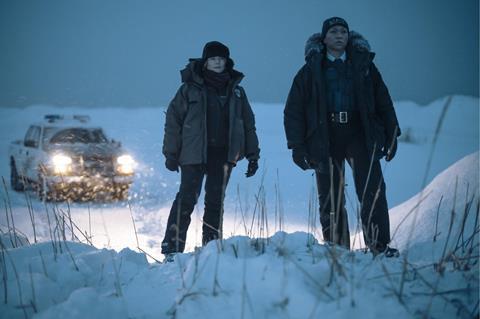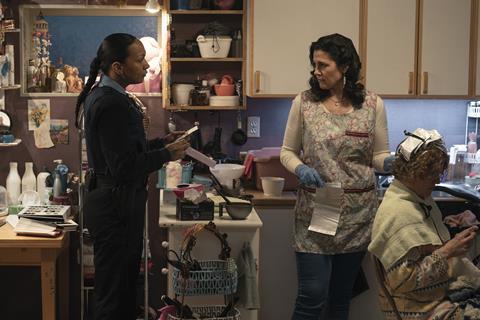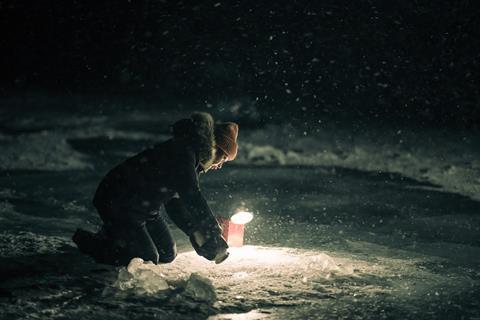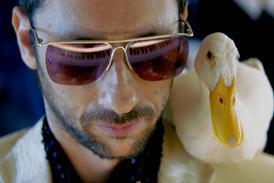
HBO’s True Detective: Night Country takes place in the fictional Alaskan village of Ennis and while writer-director Issa Lopez’s scripts always called for this location, the reality of shooting in Alaska was almost as difficult as moving the show’s ‘corpsickle’, the name for the tangled and frozen bodies that kick start the investigation.
Mari Jo Winkler, executive producer, worked alongside British Columbia-based location manager Robin Mounsey, who has worked extensively on cold weather locations in the Arctic, Norwegian Fjords, and Canadian Rockies on films like The Revenant and The Mountain Between Us, to chart the show’s arctic course.
Fairly quickly, they realised Alaska wasn’t feasible. For the kind of remote arctic wilderness they wanted to shoot, Alaska was — ironically — too inhospitable. Some of the areas were so remote that the only option would be to fly cast and crew in.
Additionally, Alaska doesn’t have a production tax incentive and a limited filming infrastructure which would require HBO to bring everyone and everything to each shoot. “It was financially not necessarily feasible and also environmentally not a great idea,” explains Winkler.
The team began looking at the Canadian Arctic and Iceland as their other two options, but Canada posed the same hospitability issues The decision to film in Iceland was sweetened by the recently increased tax incentive of 35%, which the production was able to access on their reported budget of around $60m.
Working alongside Leifur Dagfinnsson of Iceland-based production company Truenorth, the production found its base in the Icelandic capital of Reykjavik. “The benefit of Reykjavik for us was a lot of the locations that we shot were within a 30- minute drive of the city centre,” said Winkler. “You could efficiently base a crew there.”
Having Icelandic crew on the show was particularly useful given the weather conditions with which they were faced. “They are built for the environment,” says Winkler of the local crew. “They are problem solvers, they know how to work in the extreme conditions in which we worked.”

But snow alone does not an Alaskan village make. When Winkler came on board, one of the things she wanted to do was location scout in Alaska to ensure they could recreate an authentic, if fictional, Alaskan town. Alongside production designer Dan Taylor, they flew to Anchorage and spent several days in the towns of Nome and Kotzebue, the latter of which is 29 miles above the Arctic Circle, before heading to Iceland.
While in Kotzebue, the team worked closely with Iñupiat families and specifically Qaluraq Lance Kramer, who serves on the Alaska Native Corporation board, to make sure they were authentically representing the community’s culture, customs and daily lives. They were also able to shoot some drone footage in the US state, to help immerse the viewer in the reality of the Alaskan Arctic.
It was then down to Taylor and his team to redesign an entire town Alaskan town in a totally foreign country. While location scouting with TrueNorth supervising location manager Thor Kjartansson, he discovered a main street near the Icelandic town of Keflavik that had previously been part of a US Army radar station. The street had much more ‘American’ style. It was wider, and the houses were built with less uniformity. This provided the ideal canvas for him to work with for Ennis.
They shot key scenes including the house of Jodie Foster’s character house, a bar and laundrette among others in Keflavik. They also shot overhead in a town called Dalvik for the scene where the ‘corpsickle’ is being driven through town.
To accurately double Iceland for Alaska, Taylor had to source a variety of uniquely US items. Not just things like US road signs and cars, but radiators.
“For every interior that we were using as a location, we had to bring plumbers in,” Taylor says. “First, snip the radiators, take the radiators out, paint or wallpaper. And then when we left the property, we’d bring the radiators back in.”
There were also electrical sockets, refrigerators, and Taylor’s least favourite, “bloody light switches” to change. All of this work, combined with Iceland’s wintry weather, meant it was an expansive and tightly timed shoot. “We had a very busy set strike schedule. We were in and out in 112 days,” says Taylor.
Flexibility is king
“We were always ready turn on our heels and go in a different direction if there was no snow or there was too much snow — we had multiple places ready to shoot.”
In other words, the production couldn’t afford to slow down. Luckily, the Icelandic crews were “talented and resourceful” says Taylor, especially given the extreme weather.
Dagfinnson says Icelandic crews “can bring in a main unit, and large crews into these areas at certain times that are trickier to shoot weather wise, but we can achieve that safely and with great results in camera.”
Winkler recalls a particular time when a location she and Lopez scouted the previous day had been perfect, only for them to turn up for their night shoot to find the wind impenetrable.

“Issa got out of her vehicle and she’s like, ‘what’s going on? It’s so windy. We can’t shoot. How are we going to shoot?’ And I said, ’If we couldn’t shoot, they would have notified us before we came all the way out here.’ And we’re screaming [this] at each other because it’s so windy you can’t hear.
“We went over to Thor [Kjartansson] and said ‘what are we going to do about dialogue? How can we shoot?’ He says: ’Not a problem.’ And he went and got a van and drove it onto the ice to block the wind so that we could shoot. We learned not to panic,” Winkler laughs.
Filming in Iceland taught them more, too. “It was about embracing the adventure and also being of service and adapting to the environment. I think everybody should learn how to do that,” Winkler says.
Sustainability was a big part of True Detective: Night Country’s production plan, and is integral to True North’s ethos as well; Iceland runs on 85% renewable energy. “You’re shooting on stage facilities and interiors that were running off clean energy. They also are wired for electric vehicles,” Winkler says.
For Dagfinnsson, the sustainability measures put in place on True Detective: Night Country’s production “a huge step and kind of set a new kind of benchmark for future productions to work to or use. Hand in hand with HBO, we were able to amplify that to a level that we have not seen before in Icelandic production.”
In a country like Iceland, or a state like Alaska, the brunt of climate change is viscerally apparent, Dagfinnsson says. During production, HBO’s director of sustainability Heidi Kimberg was “right there with me,” Winkler says, “making sure that we were we were doing the most we could.”
Winkler adds, “You always want to leave a location better than you found it. And you want to leave something behind, whether it’s training crew or a piece of new clean energy technology.” On True Detective: Night Country, “It was a very collaborative communal exchange. They learned from us. We learned from them, and we walked away feeling inspired.”






![The Brightest SunScreen[Courtesy HKIFF]](https://d1nslcd7m2225b.cloudfront.net/Pictures/274x183/3/5/0/1448350_thebrightestsunscreencourtesyhkiff_312678.jpg)


















No comments yet